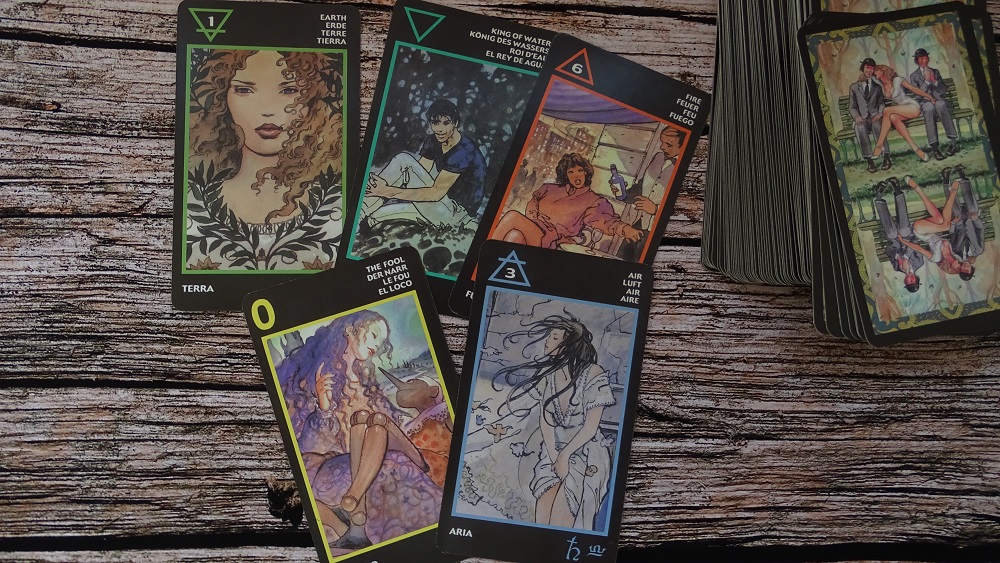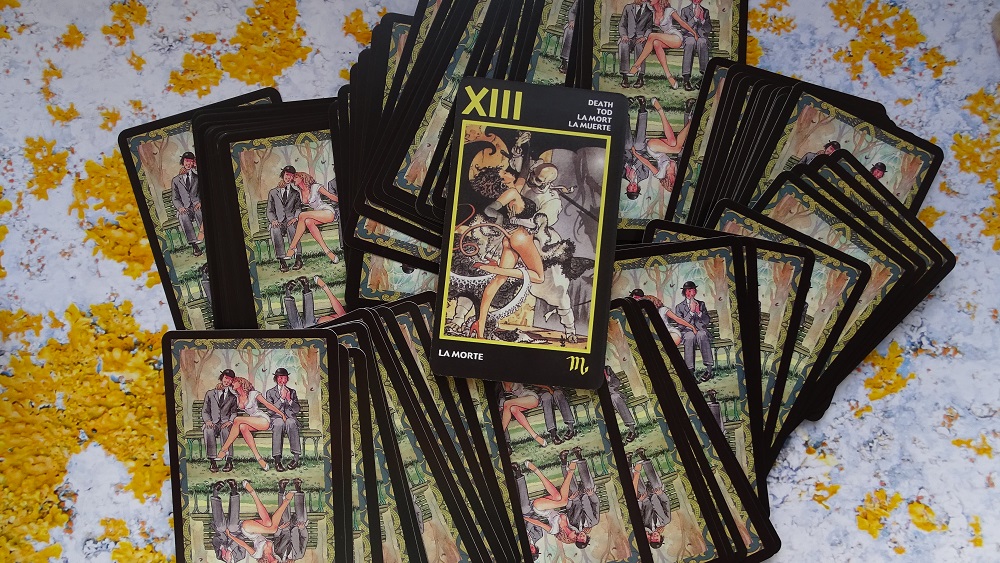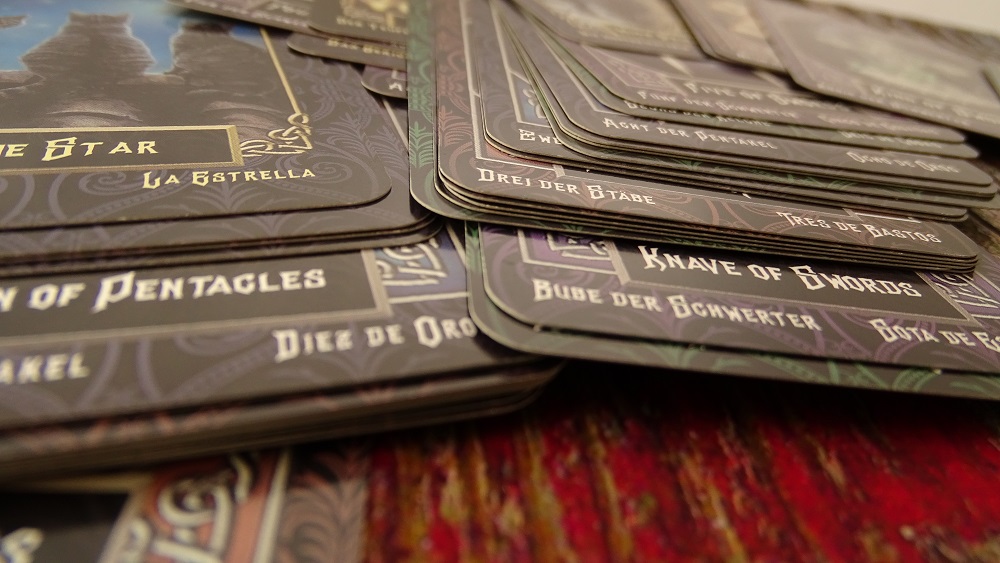What are the basics of Tarot card reading?
In order to start working with a magic deck, first you need to familiarize yourself with the meaning of each card. You need to know the basics of Tarot, otherwise a full-fledged and reliable fortune-telling simply will not work. Interpreting Tarot cards is the most difficult, but at the same time, the most interesting process for a Tarot card reader. Today we will talk about how you can generally interpret cards, how to learn to understand the classic and specialized decks.
Ways to interpret Tarot cards
There are two main ways to interpret Tarot Cards. The first is to study the basic meanings of each Arcana according to the instructions attached to the deck, specialized literature, various courses and master classes. The second is an independent study of the symbolic field of each card, when the Tarot reader simply takes the deck and gradually, closely examining each Arcana, finds his own associations associated with it.
It is difficult to say which method is better, since each master has his own opinion on this matter. So, for example, for a person with a rich imagination, the interpretation of the Arcana of the Tarot in an intuitive way may be more convenient than memorizing book interpretations. Many generally prefer to combine both methods: acquaintance with the bookish, traditional meanings of the cards, as well as exploring their own elaboration.
Much depends on the deck itself. So, for example, the interpretation of the Ryder-Waite Tarot cards usually does not cause any difficulties, since all the Arcana, including the Minor ones, are depicted in the form of simple pictures, the meaning of which can be understood without even looking at the book. But Aleister Crowley’s Tarot Thoth cannot be understood intuitively, since the Minor Arcana are not drawn, and the meanings themselves put into the cards by the author are very different from classical interpretations. Of course, for a Tarot reader with experience, this deck will not become particularly difficult. It will be quite difficult for a beginner to work with it.
As you can see, there is no single correct way. Everything depends only on you. For example, I know one girl who does not look into reference books at all and works exclusively with her own feelings. Her spreads always hit the mark, despite the fact that some of her interpretations are very far from the classic ones. So the interpretation of Tarot spreads is a purely individual thing.
General interpretation of the Arcana Tarot
Interpretation of the Major Arcana Tarot
Despite the fact that in different decks the interpretation of the same card may be different, the Major Arcana usually retain a similar meaning. Now we will look at the interpretation of Waite’s Tarot cards, as beginners can rely on these values. However, do not forget that the final interpretation depends on your personal perception and the specifics of the deck.
The Fool – Start, spontaneity, stupidity, something new, take risks;
The Magician – Possibilities, action, concentration of will, awareness;
The High Priestess – Intuition, inner voice, mystery, potential, trust;
The Empress – Fertility, motherhood, abundance, harmony with nature, sensuality;
The Emperor – Power, structure, strength, governance, control;
The Hierophant – Adherence to tradition, adherence to rules, spirituality, mentoring;
The Lovers – Relationships, heart choices, love;
The Chariot – Will, victory, self-affirmation;
The Strength – Inner strength, curbing passions, patience, self-control;
The Hermit – Loneliness, spiritual search, inner experiences, rethinking;
Wheel of Fortune – Fate, turning point in life, movement, change;
Justice – Responsibility, Decision, Cause and Effect;
The Hanged Man – Suspended, victim role, letting go, drastic change;
Death – The end of something, the transition to a new level, unforgiving force;
Temperance – Harmony, balance, consistency, moderation;
The Devil – Attachments, bondage, materialism, harmful passions;
The Tower – Unexpected changes, getting rid of something, coup;
The Star – plans, self-realization, inspiration, appeasement;
The Moon – Illusions, fears, deception, dark side, fantasy, imagination;
The Sun – Confidence, vitality, success, recognition, glory;
Judgment – Karma, rewards / punishments, inner challenge, rebirth;
The World – Unification, achievement, vision of the big picture, success, completion.
As you can imagine, the full interpretation of the Tarot cards will be much broader than the above values. But you need to explore the symbolic field of each Arcana on your own, relying on your feelings.
Interpretation of the Minor Arcana Tarot
So, we talked about the main meaning of the Major Arcana, now it’s worth moving on to the Minor Arcana meaning. We will also take as a basis the interpretation of White’s Tarot. Please note that the interpretation of the Minor Arcana and court cards in different decks can change, sometimes quite significantly.
The Suit of Wands
Ace: new beginnings, breakthrough energy;
Two: Partnership, plans for the future;
Three: Success, leadership;
Four: Prosperity, harmony, enjoyment of the results of labor;
Five: Excitement, problems;
Six: recognition in society, success;
Seven: Competition, defending one’s position, views;
Eight: Rapid change, communication;
Nine: Self-defense;
Ten: Success that brings difficulty;
Page: News, new interests;
Knight: Travel, action, ride;
Queen: Business acumen, activity;
King: Activity, influence.
The Suit of Cups
Ace: Creative energy, love, the beginning of a romance;
Two: Happy relationship, successful partnership;
Three: Holiday, party, celebration;
Four: Apathy, boredom, sadness, satiety;
Five: Depression, grief;
Six: Simple joys, nostalgia, greetings from the past;
Seven: Confusion, multiple options, illusions, dreams;
Eight: Lifestyle changes, leaving something behind;
Nine: Fulfillment of desires;
Ten: Satisfaction, happiness, luck;
Page: News that touches your heart;
Knight: Invitation, proposal;
Queen: Intuition, help;
King: Gentleness, advice, healing, kind soul.
The Suit of Swords
Ace: Critical moment, success through difficulties, triumph of intellect;
Two: Neutral position, expectation, balance;
Three: Separation, misfortune, anxiety;
Four: Leaving the world, rest, sometimes a hospital;
Five: Pointless struggle, limitations;
Six: Get away from difficulties, troubles;
Seven: Theft, deception, refusal to counter;
Eight: Fall into the trap;
Nine: Mental suffering, worry, anxiety;
Ten: Failure, collapse, bad luck;
Page: Surveillance, obtaining information by phone or letter;
Knight: Argument, breaking change;
Queen: Bad faith, bitter experience;
King: Authority, ambition.
The Suit of Pentacles
Ace: Material success, good health;
Two: Manipulation of money or time, frivolity;
Three: New business, success;
Four: Success, but at the same time unwillingness to meet change;
Five: Material loss, deterioration in well-being;
Six: Getting help;
Seven: Willingness to work hard;
Eight: New hobby, study, work;
Nine: Self-made success, safety;
Ten: Property, money, inheritance;
Page: News about money or work;
Knight: Caution, patience to achieve the goal;
Queen: Practicality, self-confidence;
King: Honesty, a practical view of the situation.
Interpretation of Tarot cards in the spreads for relationships
It can be difficult for novice tarologists to interpret a particular card when it falls out in a thematic spread. So, for example, what can the Ten of Pentacles mean if we ask about a person’s feelings, if the main meaning of the card is money, property, inheritance? In fact, the interpretation of the Tarot on relationships is not as difficult as it sometimes seems. You don’t have to memorize any lists of keywords and rewrite the meaning of each card in various spheres of life in a notebook. You just need to turn on your imagination and think about how the traditional interpretation can manifest itself in a narrower way.
Let’s take our example with the Ten of Pentacles: since the card speaks of property and money, then when asked about a person’s attitude, it can answer as follows: he is more concerned with the material background of the relationship, some kind of personal benefit, rather than feelings. It may well be a marriage of convenience or a couple, where one person has some kind of material benefit. A girl who clings to a young man for money or a man who is in love with a “good party”. This may be the interpretation of the Tarot card. Three of Cups in spreads for feelings will mean true joy from a relationship, a holiday of the soul, or a union in which lovers spend a lot of time in companies, get-togethers, and lead an active lifestyle in society. The main thing here is to think a little and turn on your imagination, then you can intuitively choose the correct meaning of the card in any thematic scenario, not only in love.
Features of the interpretation of non-classic decks
Separately, it should be said about the interpretation of cards in specialized decks, which differ from Ryder-Wyatt, which is considered a classic Tarot deck. So, for example, the interpretation of Crowley’s Tarot is simply impossible without studying the works of the author himself. The Occultist’s deck is based on Kabbalah and astrological correspondences. It is filled with esoteric symbols, including those from Egyptian and Celtic mythology, so it will not be possible to interpret it purely intuitively. More precisely, if you wish, of course, it will work out, but without understanding the full depth of symbolism put into these cards by the author, you will not be able to see the many subtle nuances of interpretation.
The interpretation of the Tarot Decameron is based on the world of human passions. This deck is best suited for dealing with love affairs. It will not work to tie the interpretation of cards to the classics when working with it. You need to study the specifics of the deck and penetrate the meaning laid down by the author.
The interpretation of the Tarot of Shadows is generally a topic for a separate conversation. Here you will not see the usual names of the Major and Minor Arcana, but instead, you will meet with dark angels, entities, phenomena and objects. So, for example, in the place of the usual Magician in this deck is Satan, and the fourth Arcana is not the Emperor at all, but Lucifer. Among the Minor Arcana there are magical herbs and objects, human vices and tools of sorcerers. This deck is very different from the classic decks, and to understand it you need to be well-versed in the world of black magic.
As you can see, the Tarot cards can be interpreted in different ways. A lot depends on your personal perception and the meaning laid down by the author of the deck that you use for the Tarot spread.
Discover more from Esoteric Hut
Subscribe to get the latest posts sent to your email.




This article provides me clear and practical instructions for beginners on how to interpret Tarot cards. I appreciate how it breaks down the process step by step, making it less intimidating for those new to Tarot reading. The tips on developing intuition and using guidebooks as a reference are particularly helpful. Overall, it’s a great resource for anyone looking to start their journey with Tarot and gain a deeper understanding of its symbolism and meanings.